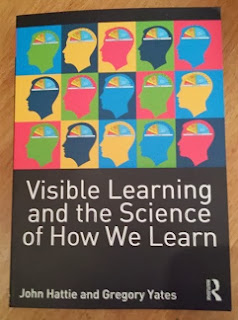I’m reading what I think is by far and away one of the best written books I’ve come across in many a year: Visible Learning and the Science of How We Learn by John Hattie and Gregory Yates.
One of the most obvious assets of the book is that it is enormously accessible to teaching practitioners while, at the same time, covering some of the most up-to-date research findings.
I found just about every chapter as exciting (Yes, that’s right! Exciting!) as the one before. Not only does it cover and give excellent advice on what relationships between students and students and students and teachers should look like but it also deals with many of the gritty issues teachers demand answers to and often don’t get from training courses.
How is knowledge acquired? How are skills developed? How important is deep learning (skills, knowledge and understanding)? What is short-term memory and how does it relate to long-term memory? All of these and more hot topic questions are answered.
Of course, what many teachers will want to know is whether Hattie and Yates favour constructivist or direct instruction approaches and on this controversial subject, they are suitably nuanced. In case that brings a jolt to your heart, they are very much in favour of direct instruction for novices in any domain, though, in such a short review, this sounds crude and doesn’t do justice to the richness and complexity of their findings.
Ultimately, I particularly enjoyed reading the chapter on ‘The impact of cognitive load’, which deals with why it is so hard for humans to learn things for which they are not hard-wired and how teachers and instructional design can make learning so much easier for learners.
Whether you teach learners who are six or sixty-six, this book is a must. You can get it here or put it on your wish-list.
Whether you teach learners who are six or sixty-six, this book is a must. You can get it here or put it on your wish-list.
